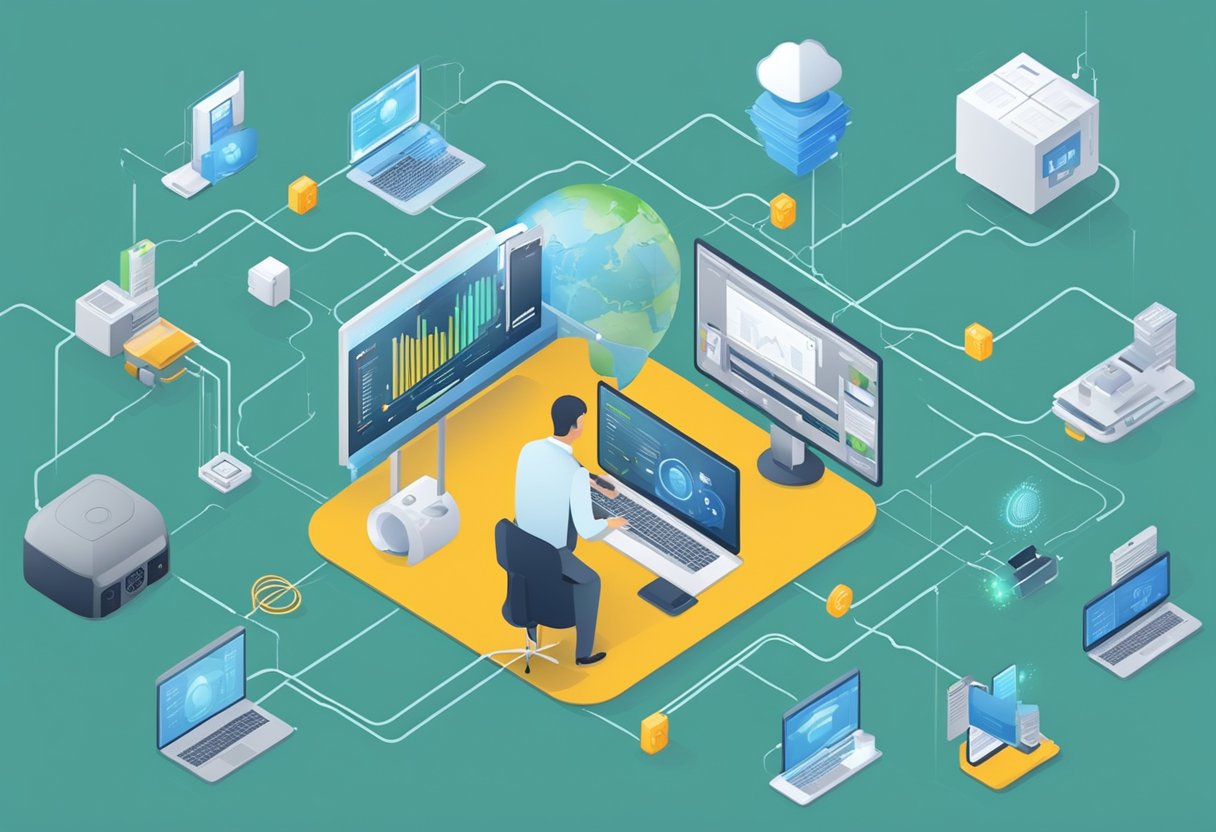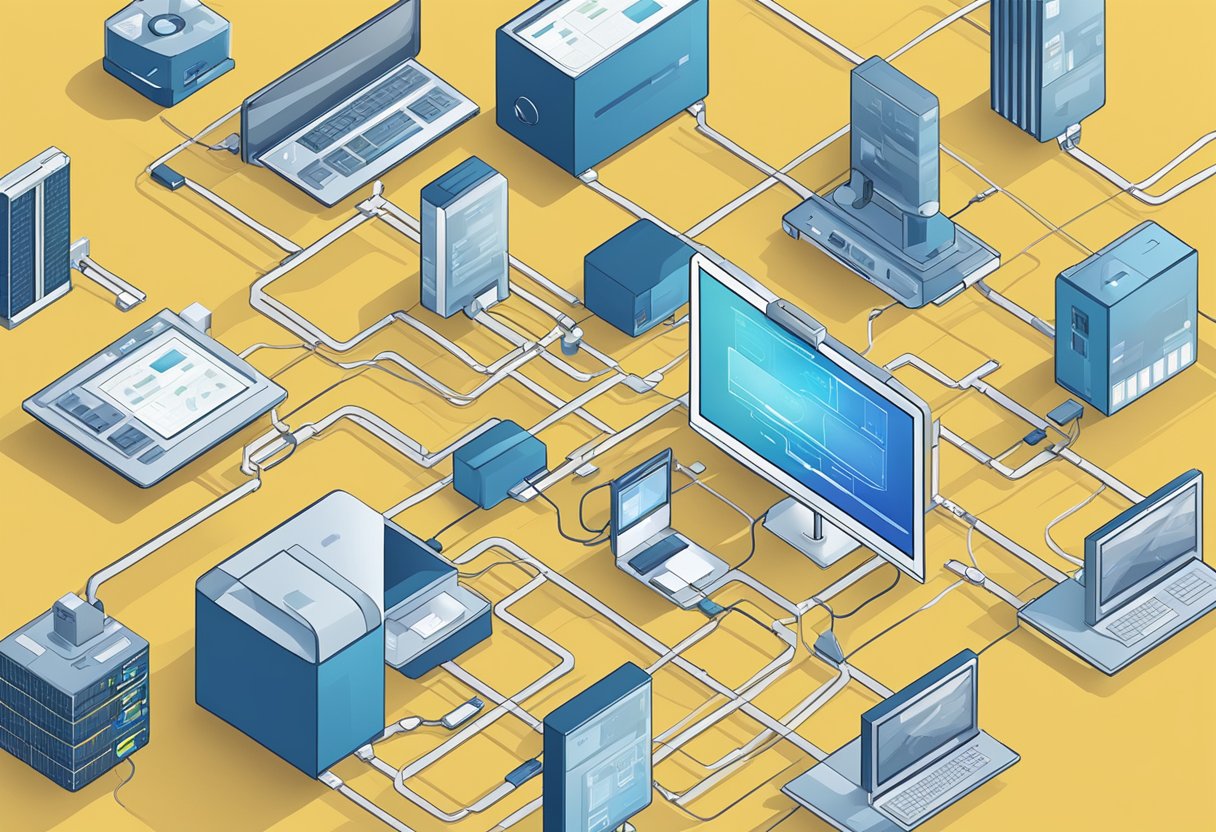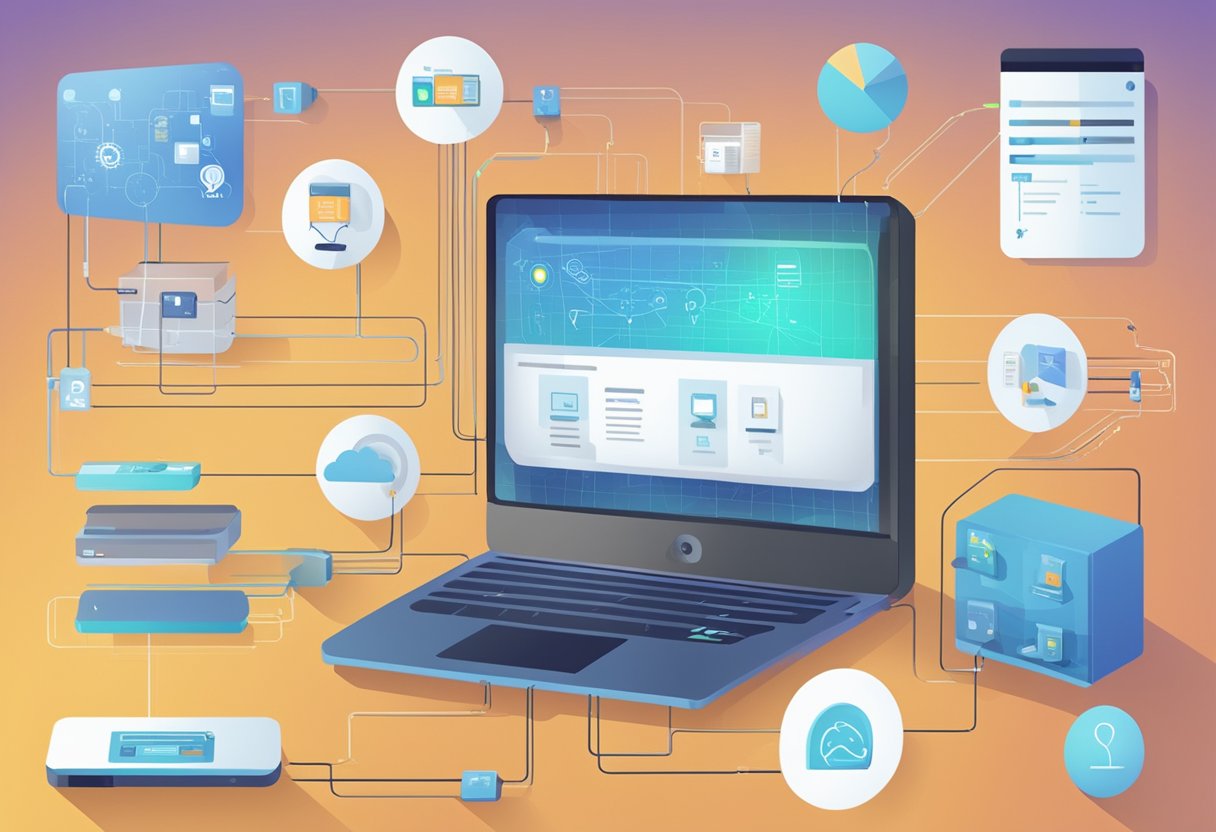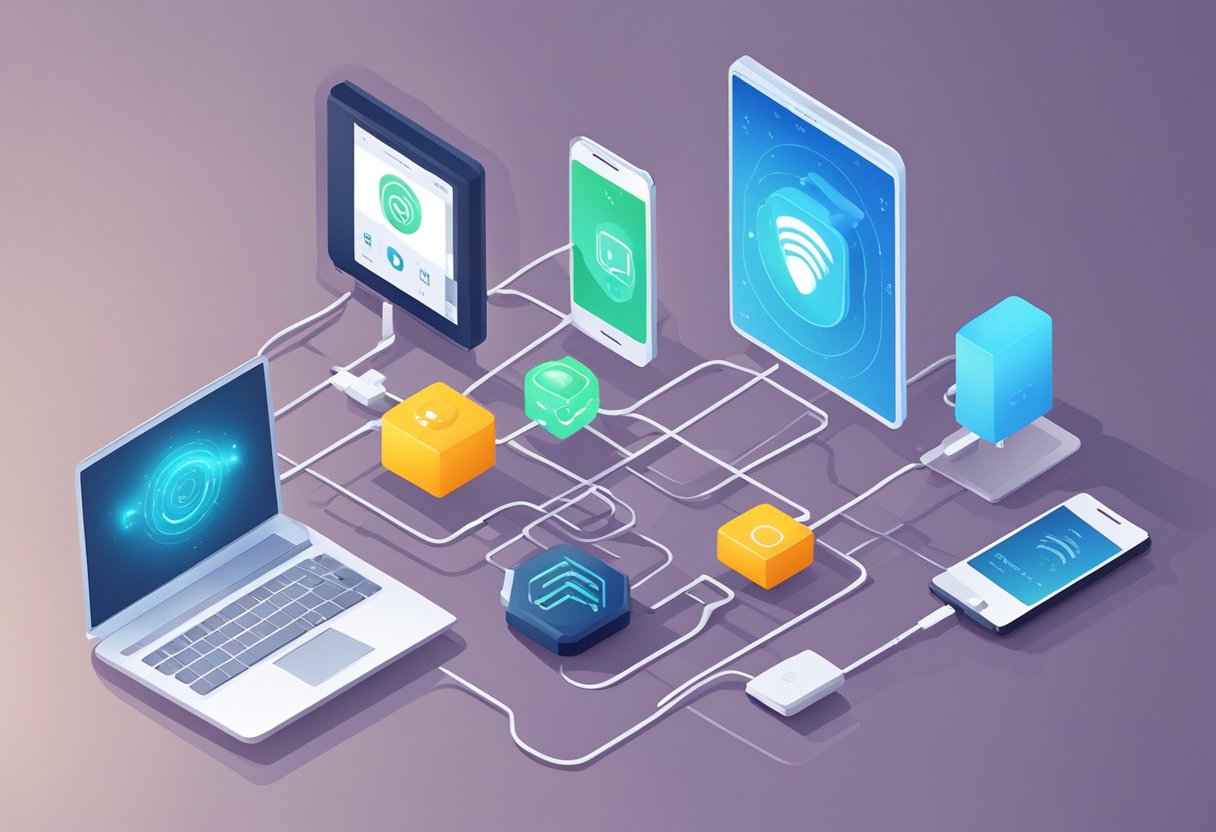The Internet of Things (IoT) is a rapidly growing technology that has revolutionized the way we interact with devices. With IoT, devices can communicate with each other and exchange data over the internet without human intervention.
Remote connectivity is a key feature of IoT that enables users to connect to and control their devices from anywhere in the world.
Remote access to IoT devices is essential for managing and monitoring them.
Setting up IoT devices for remote access requires some initial configuration, including assigning IP addresses, configuring firewalls, and opening ports.
There are several remote access tools and techniques available that enable users to connect to and control their devices remotely, including VPNs, SSH, and remote desktop software.
Key Takeaways
- IoT devices can be connected and controlled remotely over the internet.
- Setting up IoT devices for remote access requires initial configuration, including assigning IP addresses and configuring firewalls.
- Remote access tools and techniques, such as VPNs and remote desktop software, enable users to connect to and control their devices remotely.
Understanding IoT and Remote Connectivity
Essential IoT Concepts
The Internet of Things (IoT) is a network of physical devices, vehicles, home appliances, and other items embedded with electronics, software, sensors, and connectivity that enables these objects to connect and exchange data.
IoT technology has revolutionized the way we interact with the world around us, making it possible to remotely monitor and control devices from anywhere in the world.
IoT devices typically consist of sensors that collect data and transmit it to a central server or cloud-based system. These devices can be remotely accessed and managed, allowing for real-time monitoring and control of various systems, such as home automation, industrial control, and healthcare.
Benefits of Remote IoT Device Management
Remote IoT device management offers a range of benefits, including increased efficiency, reduced costs, and improved safety.
With remote access to IoT devices, it is possible to monitor and control systems from anywhere, at any time, without the need for physical presence. This can lead to faster response times, reduced downtime, and increased productivity.
Remote IoT device management also enables predictive maintenance, allowing for the early detection of potential issues before they become major problems. This can help to reduce maintenance costs and extend the life of equipment.
Challenges in Remote IoT Connectivity
While remote IoT connectivity offers many benefits, it also presents several challenges. One of the biggest challenges is security.
IoT devices are often vulnerable to cyber attacks, and remote access can increase the risk of unauthorized access to sensitive data.
Another challenge is connectivity. IoT devices often rely on wireless networks, which can be unreliable in remote areas or areas with poor signal strength. This can lead to data loss or delays in data transmission, which can impact the effectiveness of remote IoT device management.
Setting Up IoT Devices for Remote Access
IoT devices have become an integral part of modern-day life. Whether it’s a smart thermostat or a security camera, these devices make our lives easier and more convenient. However, accessing these devices remotely can be a challenge.
In this section, we will discuss the steps required to set up IoT devices for remote access.
Initial Configuration
Before configuring an IoT device for remote access, you must ensure that the device is set up correctly. This includes connecting the device to the internet, configuring the device’s IP address, and setting up a password to protect the device from unauthorized access.
Once the device is set up, it can be accessed remotely using a web browser or a remote access application.
Network Considerations
When setting up an IoT device for remote access, you need to consider the network configuration. This includes configuring the router to allow remote access, setting up firewall rules to protect the device from unauthorized access, and ensuring that the device’s IP address is static to avoid any issues with dynamic IP addresses.
It is also crucial to ensure that the network has adequate bandwidth to support remote access.
Security Protocols and Encryption
Security is a critical consideration when setting up IoT devices for remote access.
Make sure to use secure protocols such as SSL or TLS to encrypt communication between the device and the remote access application. It is also crucial to ensure that the device is protected by a strong password and that the password is changed regularly.
Additionally, make sure to keep the device’s firmware up to date to ensure that any security vulnerabilities are addressed promptly.
Remote Access Tools and Techniques

Remote access tools are essential for securely accessing and managing IoT devices over the internet. These tools enable remote access to IoT devices and provide a way to manage them from a central location.
There are several remote access tools and techniques available, and each has its own advantages and disadvantages.
SSH and Secure Shell Access
SSH (Secure Shell) is a popular remote access tool that provides a secure way to access and manage IoT devices over the internet.
SSH connections are encrypted, which makes them more secure than other remote access tools. SSH connections can be established using an access token or a password, and users can securely access the IoT device’s command line interface (CLI) to execute commands.
Remote Desktop and VNC
Remote Desktop Protocol (RDP) and VNC (Virtual Network Computing) are two popular remote access tools that provide a graphical user interface (GUI) to remotely access IoT devices.
RDP is a proprietary protocol developed by Microsoft, while VNC is an open-source protocol. Both protocols can be used to remotely access the desktop of an IoT device and provide a GUI to manage it.
VPN and Secure Tunneling
VPN (Virtual Private Network) and Secure Tunneling are two techniques used to securely access IoT devices over the internet.
VPN connections provide a secure and encrypted connection between the user’s device and the IoT device, and all data transmitted is encrypted.
Secure Tunneling, on the other hand, creates a secure connection between the user’s device and a proxy server, which then connects to the IoT device. This technique is useful when the IoT device is behind a firewall or NAT.
Monitoring and Managing IoT Devices Remotely

Remote management of IoT devices has become increasingly important as more devices are being deployed in various industries.
This section will cover the various aspects of remote management, including real-time monitoring, device management platforms, and troubleshooting remote devices.
Real-Time Monitoring
Real-time monitoring is an essential part of remote management, allowing users to keep track of their devices and receive alerts when something goes wrong.
This can be done through a web application or a GUI, depending on the device management platform being used. Real-time monitoring can help identify issues before they become major problems, allowing for quick and efficient troubleshooting.
Device Management Platforms
Device management platforms are used to manage and monitor IoT devices remotely.
These platforms allow users to perform a variety of tasks, including firmware updates, configuration changes, and security updates. Some of the most popular device management platforms include AWS IoT Device Management, Microsoft Azure IoT, and Google Cloud IoT Core.
Troubleshooting Remote Devices
Troubleshooting remote devices can be challenging, as users may not have physical access to the devices.
However, there are several tools and techniques that can be used to troubleshoot remote devices, including remote access, log analysis, and remote debugging.
It is important to ensure that security concerns are taken into account when troubleshooting remote devices, as remote access can potentially expose sensitive data.
Advanced Remote IoT Connectivity

The Internet of Things (IoT) industry is growing at a rapid pace, with the number of connected devices expected to reach over 70 billion by 2026 [1].
With such a large number of devices, it is essential to have advanced remote IoT connectivity to ensure efficient and secure communication between devices and the cloud.
Leveraging Cloud Solutions
Cloud-based solutions have become increasingly popular in recent years due to their scalability, efficiency, and cost-effectiveness.
By leveraging cloud solutions, businesses can remotely access and manage IoT devices, allowing for seamless communication and data transfer.
Cloud-based solutions also provide a centralized location for firmware and software updates, making it easier to manage and update multiple devices simultaneously.
Automating Firmware and Software Updates
Firmware and software updates are critical for maintaining the security and functionality of IoT devices.
Automating the update process can save time and improve efficiency, as it eliminates the need for manual updates.
With cloud-based solutions, firmware and software updates can be automated and scheduled, ensuring that devices are always up-to-date with the latest security patches and bug fixes.
Scaling IoT Operations
As the number of connected devices continues to grow, businesses need to be able to scale their IoT operations quickly and efficiently.
Cloud-based solutions provide the scalability needed to manage large numbers of devices, without the need for additional on-premise infrastructure.
By leveraging cloud solutions, businesses can quickly and easily add new devices to their network, without worrying about network infrastructure limitations.
[1] ABI Research: How to Safeguard a 70 Billion Connected IoT Device Landscape by 2026
Frequently Asked Questions

How can I securely access IoT devices remotely using SSH?
Secure Shell (SSH) is a cryptographic network protocol used to securely access network services over an unsecured network.
To remotely access IoT devices securely using SSH, users should first ensure that their IoT devices have SSH installed and enabled.
They should then create a secure SSH connection to the device using a secure shell client. After that, they can authenticate using a username and password or public key authentication.
What are the steps to configure a Raspberry Pi for remote access over the internet?
To configure a Raspberry Pi for remote access over the internet, users should first enable SSH and configure port forwarding on their router.
They should then configure a static IP address for the Raspberry Pi. After that, they can create a secure SSH connection to the device using a secure shell client.
What protocols are commonly used for IoT devices to communicate online?
IoT devices commonly use protocols such as MQTT, CoAP, and HTTP to communicate online.
MQTT is a lightweight messaging protocol designed for use with IoT devices, while CoAP is a specialized web transfer protocol designed for constrained devices.
Meanwhile, HTTP is a general-purpose protocol commonly used for web-based communication.
How can I remotely access an IoT device from a Windows 10 system?
To remotely access an IoT device from a Windows 10 system, users should first ensure that their IoT device is configured for remote access and has a static IP address.
They should then use a secure shell client such as PuTTY to create a secure SSH connection to the device.
Are there any free solutions for connecting to IoT devices over the internet?
Yes, there are free solutions for connecting to IoT devices over the internet.
For example, users can use the open-source SSH client PuTTY to create a secure SSH connection to their IoT devices.
Additionally, some IoT platforms such as AWS IoT offer free tiers for users to connect and manage their IoT devices.
What measures should be taken to ensure IoT devices are safely accessible from the internet?
To ensure IoT devices are safely accessible from the internet, users should first ensure that their devices are running the latest firmware and security patches.
They should also configure strong passwords and enable two-factor authentication where possible.
Additionally, users should consider using a virtual private network (VPN) to encrypt their traffic and provide an additional layer of security.



